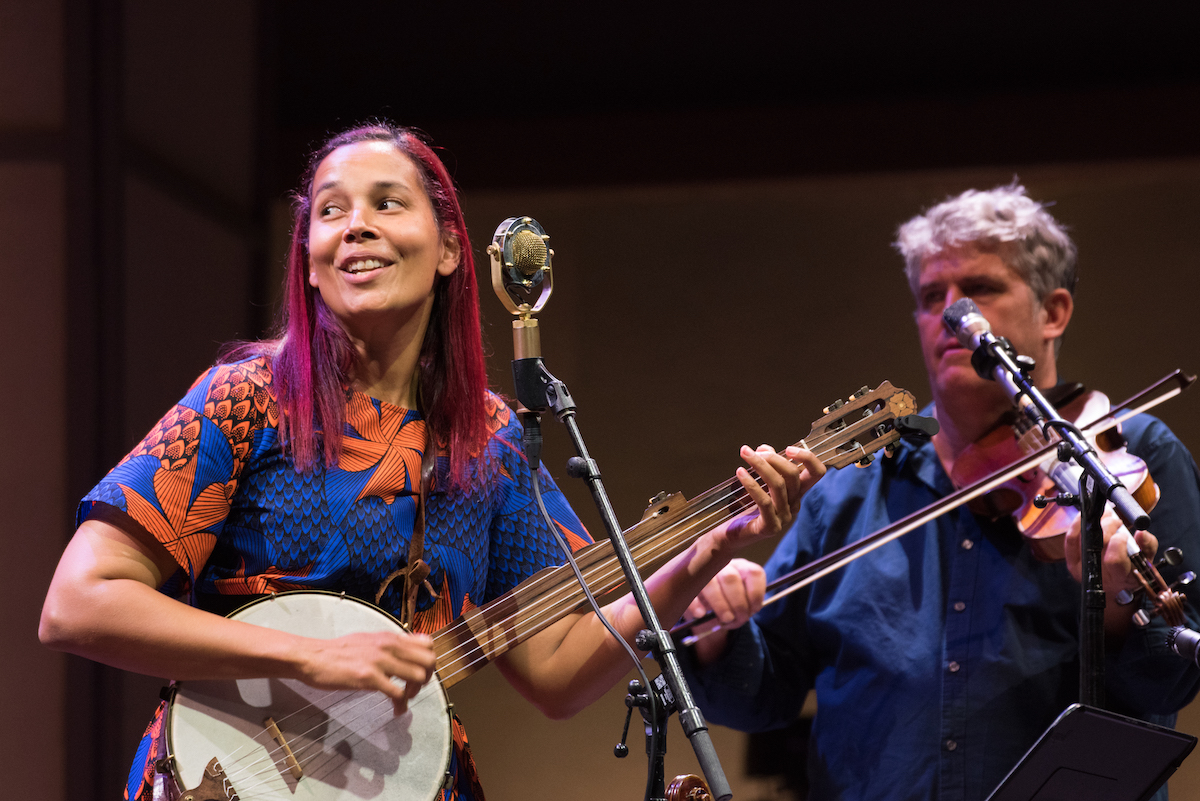75th Ojai Music Festival
John Adams Leads Forward-Facing Ojai Festival

Thanks to a strong tradition of thoughtful programming and the loyalty of one of the world’s most sophisticated audiences, the Ojai Music Festival consistently delivers a uniquely satisfying experience, and this year, after an 18-month COVID delay, was no exception. John Adams made an ideal music director for this homecoming-themed edition, and his decision to use the occasion to highlight the work of a new generation of composers was brilliantly on target. After living through a live music drought of unprecedented length and proportions, coming back to the serene beauty of Libbey Bowl to hear so much great work for the first time felt just right.
Beyond the sheer pleasure this decision granted to listeners was the sensitivity shown to the COVID-battered dreams of this talented cohort of musicians in their thirties. It’s one thing to lose a season when you have already had a few to get your bearings in the musical world, and quite another to see a year and a half slip by in which you expected to establish yourself.
The West Coast premiere of Samuel Adams’s Chamber Concerto on Friday, September 17, left no doubt that this second generation of Adams composers has what it takes to move music forward. Mesmerizing, soulful, and structurally sound, the piece will enter the standard repertoire. Violinist Miranda Cuckson was splendid as the soloist, returning after the short interval to play a section of a Bach partita while standing offstage under a tree — a very Ojai touch.
Friday morning’s 11 a.m. concert with the Attacca Quartet and Rhiannon Giddens offered a major work from the Pulitzer Prize–winning composer Caroline Shaw. Plan and Elevation, a five-part string quartet composition, was written while Shaw was in residence at Dumbarton Oaks. Perhaps this is simply the joy of hearing great music performed in person again, but during this Friday daytime concert, I felt like I was hearing the sound of a new approach to music in the work of Shaw and the other younger composers on the program. The freshness of the works by Paul Wiancko and Gabriella Smith in particular felt like a pure emanation of this new spirit.
Rhiannon Giddens was an inspired choice to anchor the festival with multiple appearances, including a rousing concert of her original/traditional material on Saturday night. She’s carved out a distinctive place in the music world, combining classical chops, academic scholarship, and lived experience as a working musician and a person of color. The result is breathtaking — imagine Nikole Hannah-Jones singing like Aretha Franklin. The careful ways in which Giddens introduces and contextualizes the music she plays never cloy or over-inform. Her skill with words equals her facility as a player of violin and banjo. The concert on Saturday night resonated with all of the pain and struggle we have experienced over the last two years in a way that was at once healing and grounding.
This edition of ON Culture was originally emailed to subscribers on July 19, 2024. To receive Leslie Dinaberg’s arts newsletter in your inbox on Fridays, sign up at independent.com/newsletters.
No great classical music festival would be complete without at least one great piano recital. This festival had two — Víkingur Ólafsson on Saturday morning, and Timo Andres on Sunday. These recitals were among the most indicative events in relation to the generational change that the music appears to be undergoing at this moment. As digital natives, Ólafsson and Andres listen and absorb musical ideas in new forms, giving birth to recitals like these that reflect a “playlist” sensibility, rather than a more traditional approach. How else to explain the astonishing feat of memorization required for Ólafsson, for example, to play 21 separate works ranging from the 17th to the 21st century in a single performance? His recent recording titled Mozart and his Contemporaries served as one key text for understanding this year’s festival as a whole, the concept being that we should listen to and perform the music of the past as though it were written today. Ólafsson has said that when he plays Mozart — or Rameau, another favorite — it’s like the ink was still wet on the page. Of course, that page is most likely displayed on an iPad, but no matter.
The Timo Andres recital early Sunday demonstrated a similar “playlist” sensibility, this time because it was based on an actual playlist — a set of short pieces written in honor of Robert Hurwitz on the occasion of his retirement as president of the Nonesuch record label. Among these 11 pieces, all of them sparkling with wit and ingenuity, one stood out as pointing the way toward Sunday afternoon’s highlight, and that was John Adams’s “I Still Play,” which set the stage for a dazzling performance of the composer’s “Hallelujah Junction” for two pianos by Joanne Pearce Martin and Vicki Ray. Adams was everywhere during this weekend — onstage conducting, backstage conversing and encouraging, and beneath the gorgeous musical surface as inspiration and reminder of all that music can do. Hearing Ray and Pearce Martin charge through the madcap hocketing finale of “Hallelujah Junction,” a hair-raising challenge of collaborative precision and timing, made it seem as though anything were possible.
The 76th Ojai Music Festival is now less than a year away, and, with the creative juggernaut known as AMOC (for the American Modern Opera Company) at the helm, it should prove to be every bit as revelatory and thrilling as this one. Congratulations to director Ara Guzelimian and his team for delivering a flawless performance, and here’s to many more seasons under the canopy in Libbey Park.
Read Josef Woodard’s review here.
Support the Santa Barbara Independent through a long-term or a single contribution.



